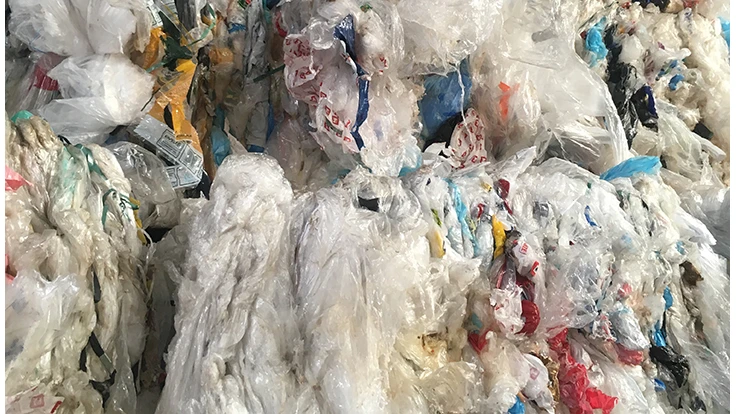
Government-approved quotes for plastic scrap imports into China for 2018 are thus far “only a fraction of the corresponding batches in the preceding year,” according to Steve Wong, president of the China Scrap Plastic Association (CSPA). Wong also is chairman of Hong Kong-based Fukutomi Corp. and serves on two committees for the Brussels-based Bureau of International Recycling (BIR).
Citing government data in an emailed dispatch to CSPA members, Wong says “batch one” of the import quotas for 2018 have authorized just 9,335 metric tons of unprocessed (nonpelletized or nonflaked) plastic scrap to enter China. That is a more than 99 percent reduction compared with the more than 3.8 million tons authorized in the first batch of quotas in 2017.
Wong writes, “If this approval rate is continued for the subsequent import permit approvals, the major recycling operations in China, which used to rely on imports, would be forced to switch to sourcing from domestic supply. The common view of the industry is that there will be no reversal of China’s solid waste imports policies beginning in 2018.”
China imported 7.3 million tons of plastic scrap in 2016, according to Wong, which comprised more than 50 percent of the total volume of all exporting countries. “Such a large volume is difficult to be absorbed by the remaining importing countries within such a short time,” he says. “While increasing the volume of exports to Southeast Asian countries, India, and others, apart from raising domestic recycling and reuse, the low-end plastic items still have no alternative outlet other than landfills and incineration in [many] exporting countries,” he adds. “This is very concerning, as the capacity of [domestic recycling and waste destinations] in many exporting countries such as the United Kingdom, Germany, the United States and Japan, is not capable of handling the increased volume yet.”
In China, “The drastic change has caused a supply gap of around 5 million tons of plastic scrap, for which the recycled plastic pellets from Southeast Asian countries is far from enough,” states Wong. He adds, however, that production capacities in the rest of Asia “have been expanding rapidly.”
The long-term goal of China’s government is to raise the volume of collected plastic scrap through new waste and recycling policies, he adds.
A December 2017 article by Bloomberg speculates that American producers of primary plastic also are poised to fill China’s new gap for plastic resins.
The natural gas boom and glut has caused the U.S. to be the world’s lowest cost producer of primary plastic, according to the article’s author. Citing the American Chemistry Council, the article states that American petrochemical companies have invested some $185 billion in new plastics capacity to meet the anticipated demand.
Latest from Recycling Today
- BMW Group, Encory launch 'direct recycling’ of batteries
- Loom Carbon, RTI International partner to scale textile recycling technology
- Goodwill Industries of West Michigan, American Glass Mosaics partner to divert glass from landfill
- CARI forms federal advocacy partnership
- Monthly packaging papers shipments down in November
- STEEL Act aims to enhance trade enforcement to prevent dumping of steel in the US
- San Francisco schools introduce compostable lunch trays
- Aduro graduates from Shell GameChanger program





